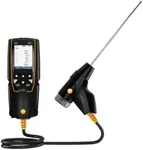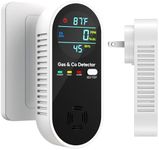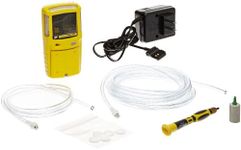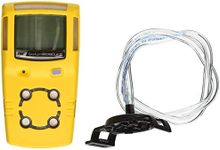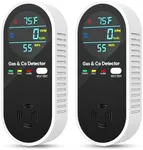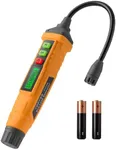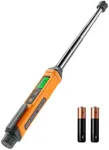Buying Guide for the Best Gas Detectors
Choosing the right gas detector is crucial for ensuring safety in environments where harmful gases may be present. Gas detectors are used to identify the presence of gases in an area, often as part of a safety system. When selecting a gas detector, it's important to consider the specific needs of your environment and the types of gases you need to detect. Here are some key specifications to consider when choosing a gas detector, along with explanations to help you understand their importance and how to choose the right one for your needs.Type of Gas DetectedThis specification indicates which gases the detector can identify. It's important because different environments may have different types of gases that need to be monitored. Common gases include carbon monoxide, methane, hydrogen sulfide, and oxygen. To choose the right one, identify the specific gases present in your environment and select a detector that can accurately detect those gases.
Detection RangeThe detection range specifies the concentration levels of gas that the detector can measure, usually in parts per million (ppm) or percentage by volume. This is important because it determines the sensitivity of the detector. For environments with low levels of gas, a detector with a lower detection range is needed, while higher ranges are suitable for areas with higher gas concentrations. Assess the typical gas concentration levels in your environment to choose the appropriate detection range.
Response TimeResponse time refers to how quickly the detector can identify the presence of gas and alert the user. This is crucial for safety, as faster response times can lead to quicker evacuation or mitigation actions. Response times are usually measured in seconds. For high-risk environments, a detector with a very fast response time is essential. Consider the urgency of detection in your environment to determine the appropriate response time.
Sensor TypeGas detectors use different types of sensors, such as electrochemical, catalytic bead, infrared, and semiconductor sensors. Each type has its strengths and weaknesses. For example, electrochemical sensors are good for detecting toxic gases, while catalytic bead sensors are better for combustible gases. Understanding the types of gases you need to detect will help you choose the right sensor type.
Power SourceGas detectors can be powered by batteries, electricity, or solar power. The power source is important for ensuring continuous operation. Battery-powered detectors offer portability but require regular battery changes, while electric-powered detectors provide constant power but may be limited by the availability of outlets. Solar-powered detectors are useful in remote locations. Consider the availability of power sources in your environment to choose the best option.
Alarm TypeThe alarm type indicates how the detector alerts users to the presence of gas, such as through audible alarms, visual indicators, or vibration alerts. This is important for ensuring that the alert is noticed promptly. Audible alarms are useful in noisy environments, visual indicators are good for quiet areas, and vibration alerts are helpful in situations where users may not be able to hear or see alarms. Choose an alarm type that suits the conditions of your environment.
Durability and Environmental SuitabilityThis specification refers to the detector's ability to withstand environmental conditions such as temperature, humidity, and physical impact. Durability is important for ensuring the detector remains functional in harsh conditions. For example, detectors used in industrial settings may need to be rugged and resistant to dust and water. Assess the environmental conditions of your location to choose a detector that can withstand those conditions.
